gridSIM
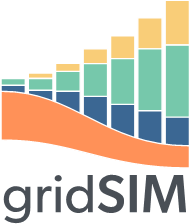
gridSIM is Brattle’s next-generation capacity expansion model. The model simulates hourly market operations, investment, and retirement over a 20 to 30-year time horizon, and was designed from the bottom-up to analyze how key drivers of the decarbonized grid of the future will affect future market outcomes. gridSIM is particularly well-suited to answering questions concerning high-levels of renewable integration, and the implications of clean energy and carbon policies of various designs.
- Electricity Market Modeling
- Market and Resource Planning Tools with gridSIM and bSTORE
- Storage, Operation, and Valuation Tools with bSTORE
- Generation Asset Valuation Tools
- Reliability Modeling with Probabilistic Tools
- Energy and Environmental Impact Tools
- Transmission Benefit-Cost Analyses with PSO
- Capacity Market Tools
- System Flexibility Needs with PSO
- Energy & Ancillary Market Designs with PSO
- Regional Market Formation with PSO
- gridSIM
gridSIM produces energy and ancillary service price forecasts consistent with the projected investment/retirement mix that it optimizes for given assumptions on both investment and operating costs. gridSIM helps identify opportunities for investment due to shifts in market fundamentals over time, and can address the following questions:
- Evaluating how renewable additions will transform the diurnal and seasonal patterns of energy market prices
- Quantifying revenues to existing generators, and identifying those resources most at risk of retirement in coming years
- Projecting the types and quantities of energy storage that will be most valuable, and how energy storage may affect prices for energy and ancillary services
- Identifying how high-level congestion patterns may shift over time due to renewable additions
- Assessing how demand response resources affect the market today (e.g., price responsive industrial loads), and how new types of demand response may affect the market in the future (e.g., managed electric vehicle charging)
- Evaluating flexible resources’ ability to earn ancillary services revenues and capture energy price spikes that less flexible resources cannot
- Evaluating the hourly operations of storage, observing energy and capacity balances to match intermittent renewables with load shapes
- Considering how much storage would be added, based on economics, over the longer term
Product Features
- Designed to simulate highly-decarbonized systems
- Detailed representation of power systems and wholesale markets
- Supported by Brattle’s experienced modelers, consultants, and testifying experts
- Easy to use and flexible, enabling highly customized representation of each client’s underlying system
gridSIM Model Framework
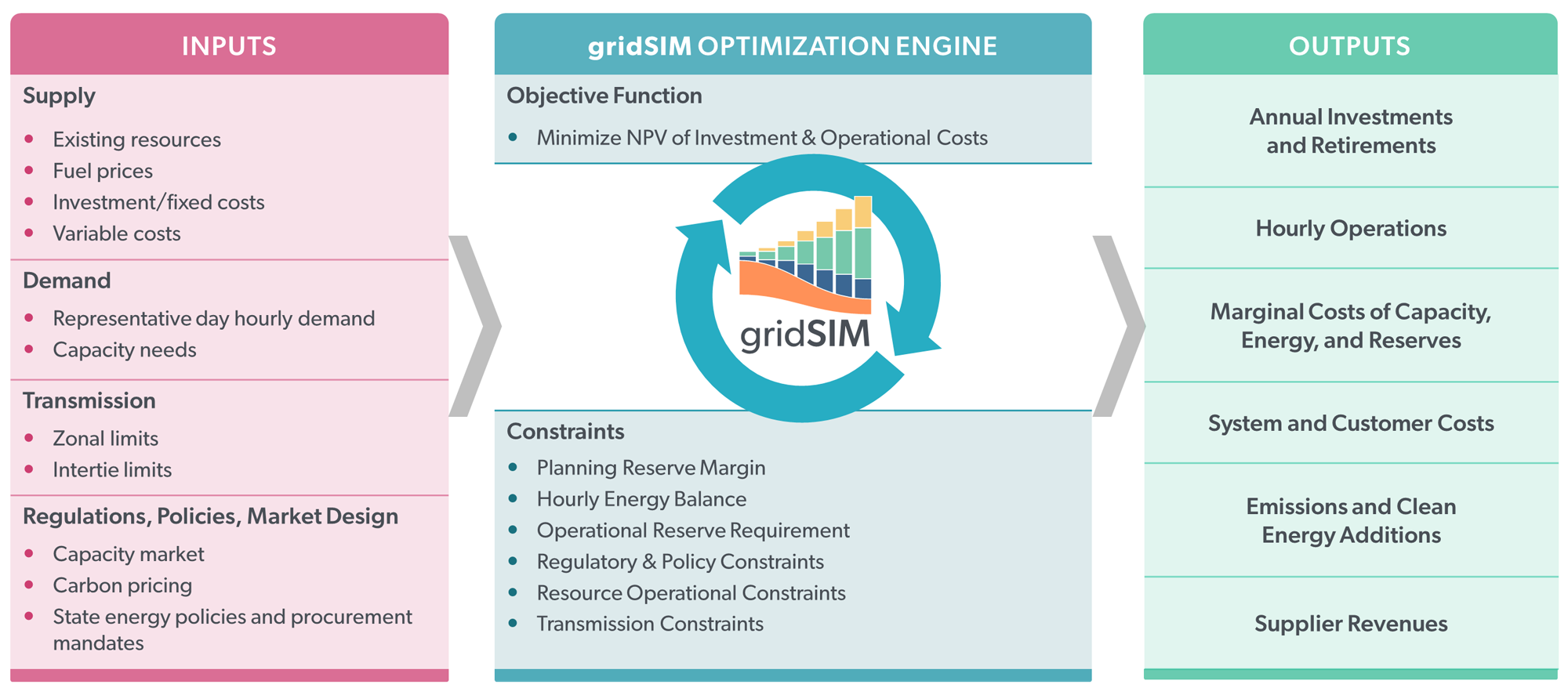
gridSIM Rhode Island Case Study
For the state of Rhode Island, Brattle provided a high-level economic analysis of the key factors that will guide the state to meeting 100% of the state’s electricity demand with renewable electricity by 2030. The study used gridSIM to forecast hourly market energy prices across New England through 2040. We used the forecasted prices to estimate the future energy market value of the candidate renewable energy resources.
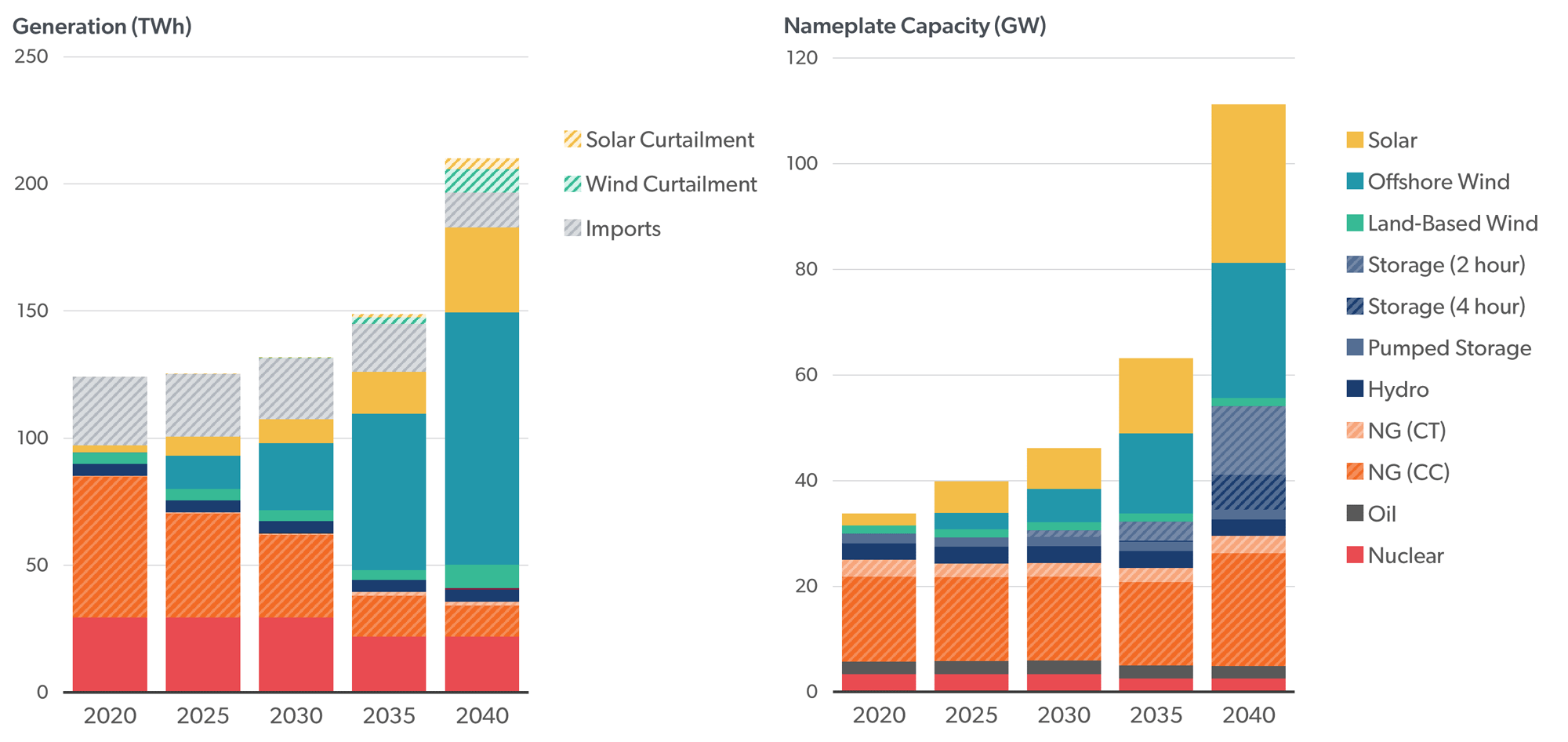
gridSIM NYISO Case Study
This graphic illustrates the hourly operations of the power system in 2040 across the 30 days simulated. In most hours, renewables and nuclear are sufficient to meet load. In the winter and summer months, some supply from renewable gas is needed to meet peak loads.

The first graphic below illustrates transmission flows within New York in 2040. By 2040, the study found power flows may occasionally reverse direction, flowing from Downstate to Upstate, due to large growth in offshore wind.
The second graphic below illustrates the production of and consumption of renewable gas by the power sector. In spring and fall, excess electricity is used to power electrolyzers and generate renewable gas. In summer and winter months, this renewable gas is used to power natural gas generators.
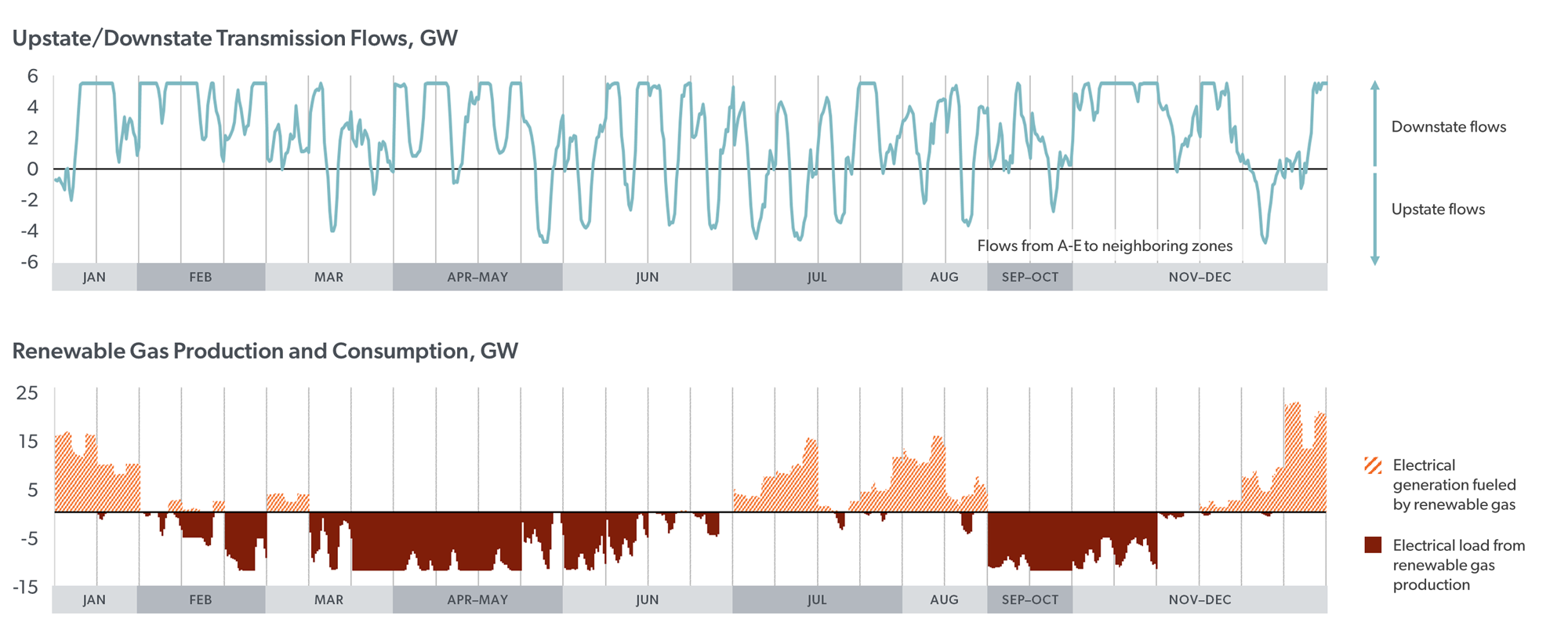
Active gridSIM Models
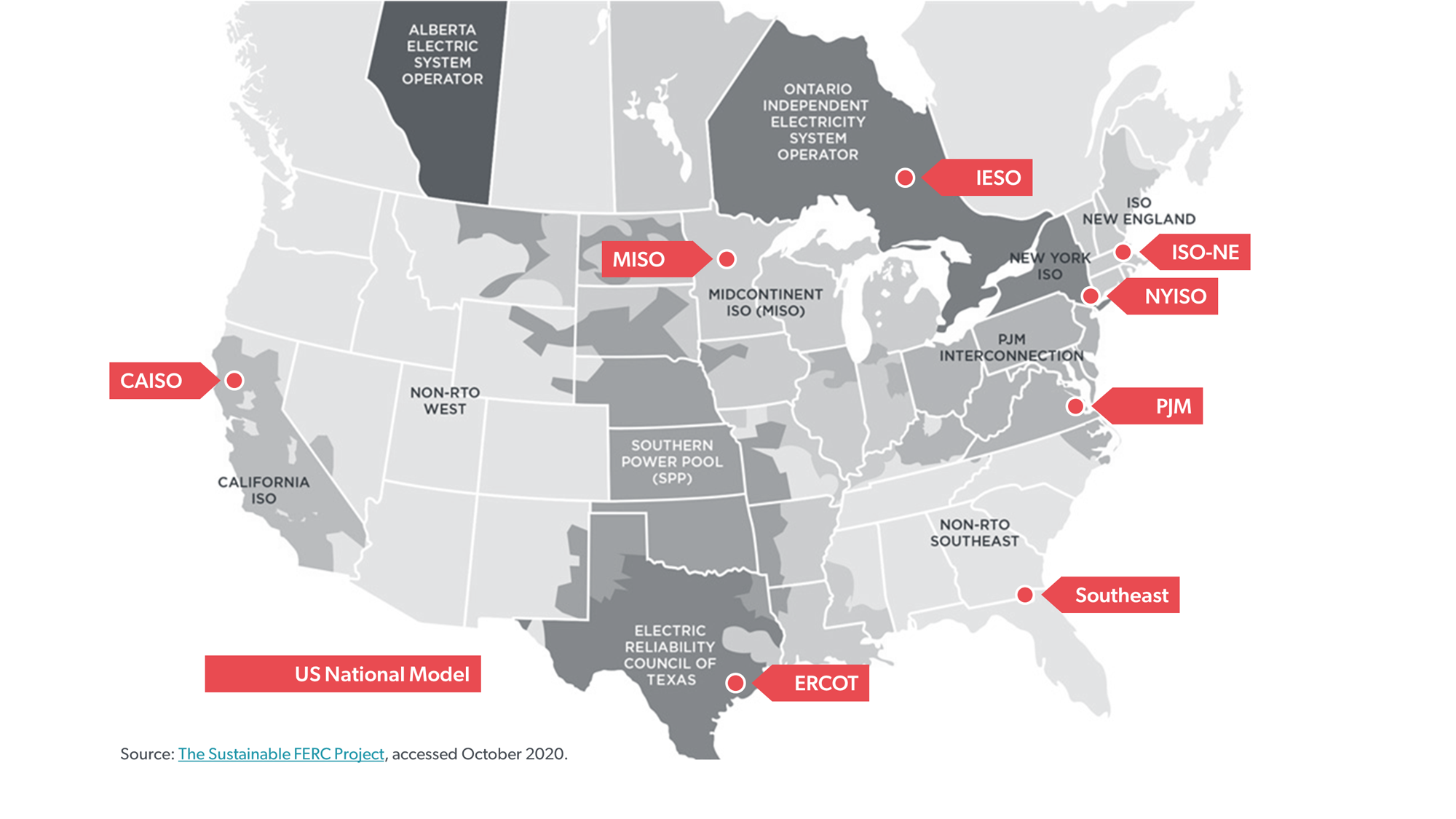
gridSIM Projects
- New York ISO Grid in Transition – Throughout this project, we used the gridSIM model to simulate how the New York power system can achieve 100% carbon-free status by 2040, and visualize implications on investment, market design, and reliability. We communicated the findings to NYISO executives, state policymakers, and market stakeholders through a series of public meetings.
- Ontario Clean Energy Procurement Design Study – For IESO, Brattle evaluated the costs and benefits of alternative clean energy procurement mechanisms.
- Clean Energy Attribute Product Design & Procurement – For NEPOOL, Brattle used the gridSIM model to evaluate different market mechanisms for procuring clean energy in New England, including a dynamic clean energy market.
- Evaluation of Future Flexibility Needs – For an investor, Brattle utilized gridSIM to simulate the ERCOT market through 2040 and evaluate how the need for and value of flexible resources, such as battery storage, would change in a future with high levels of renewable deployments.
- Market Design Enhancement Study – For a North American RTO, Brattle evaluated the benefits and costs of enhancements to energy and capacity markets, using gridSIM. The study was conducted as part of a major initiative to modernize the RTO’s market design.
- DR and EE Assessment – For EPRI and DOE, Brattle utilized gridSIM to evaluate potential enhancements to standard integrated resource planning approaches, including a more robust treatment of demand response, electric vehicles, and energy efficiency. The study demonstrated the benefits of modeling enhancements and provided recommendations for utility planning teams on implementation.
- Nuclear Valuation – For a Southeast utility, Brattle used gridSIM to evaluate the value of a nuclear plant within a resource planning context.
- US Department of Energy Grid Interactive Buildings – For the US Department of Energy, Brattle is using the National gridSIM model to evaluate the future value of grid interactive and energy efficient buildings to reduce system costs, integrate renewables, and reduce emissions.
- Investors – We frequently provide due diligence support to investors and developers in renewable, storage, and gas projects. gridSIM provides robust 20–30 year price forecasts for energy, ancillary services, and capacity that account for changing market fundamentals and clean energy policies.
- Rhode Island Heating Sector Transformation – Brattle used gridSIM to understand the potential costs and tradeoffs of decarbonizing the Rhode Island heating sector through electrification and renewable energy procurements.